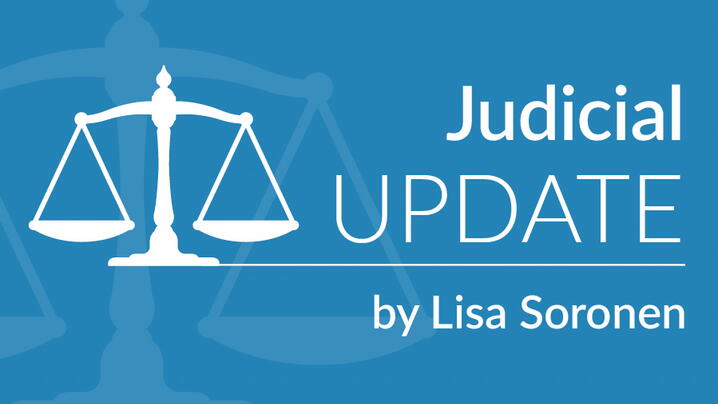
by Lisa Soronen, executive director, State and Local Legal Center
What happens if a district court adopts a redistricting plan and the state legislature later codifies that plan? Can the same district court later rule that the redistricting plan is unlawful and/or unconstitutional? That is what the Supreme Court will decide in Abbott v. Perez.
A number of people and advocacy groups challenged the Texas Legislature’s 2011 state legislative and congressional redistricting plan, claiming it discriminated against African-American and Hispanic voters in violation of the U.S. Constitution’s Equal Protection Clause and the Voting Rights Act.
A three-judge district court issued a remedial redistricting plan, which the U.S. Supreme Court vacated in 2012. The district court then drew another remedial redistricting plan called plan C235. In this plan, the court reconfigured nine challenged districts from the legislature’s 2011 plan but retained two districts, CD27 and CD35, without reconfiguration. In 2013, the state legislature ultimately adopted plan C235.
In this case, challengers claim C235 as adopted by the state legislature still has the “taint of discriminatory intent” of the 2011 legislative plan. The district court agreed despite the fact that it is the author of C235.
According to the district court, the most important consideration in determining whether the discriminatory taint remains is “whether the 2011 plans continue to have a discriminatory or illegal effect, and whether the reenactment furthers that existing discrimination.”
In this case, the Texas legislature failed to “engage in a deliberative process” to make sure C235 “cured any taint” from the 2011 plan. Instead, according to the district court, the legislature adopted C235 as part of a litigation strategy designed to “insulate” the 2011 and 2013 plans from legal challenge. As proof of this, the court cited to a letter from then-Attorney General Abbott to the House Speaker saying the “best way to avoid further intervention from federal judges in the Texas redistricting plans” and “insulate the State’s redistricting plans from further legal challenge” is to adopt C235. The court notes the letter does not say that C235 “cures the legal infirmities” of the 2011 plan.
The court could not deny being the author of C235 and said this about it: “Although this Court had ‘approved’ the maps for use as interim maps, given the severe time constraints it was operating under at the time of their adoption, the Court clearly warned that its preliminary conclusions . . . were not based on a full examination of the record or the governing law and were subject to revision.”
Governor Abbott also asked the Supreme Court to decide whether the district court’s order was appealable. He also challenged the district court’s determination that CD35 was an impermissible racial gerrymander and CD27 resulted in intentional dilution of Hispanic votes. As Abbott noted in his jurisdictional statement when the court initially adopted C235 it “provided six pages of analysis explaining why CD27 did not intentionally dilute minority voting strength, and another seven pages explaining why CD35 was not a racial gerrymander.”
New, Reduced Membership Dues
A new, reduced dues rate is available for CAOs/ACAOs, along with additional discounts for those in smaller communities, has been implemented. Learn more and be sure to join or renew today!
